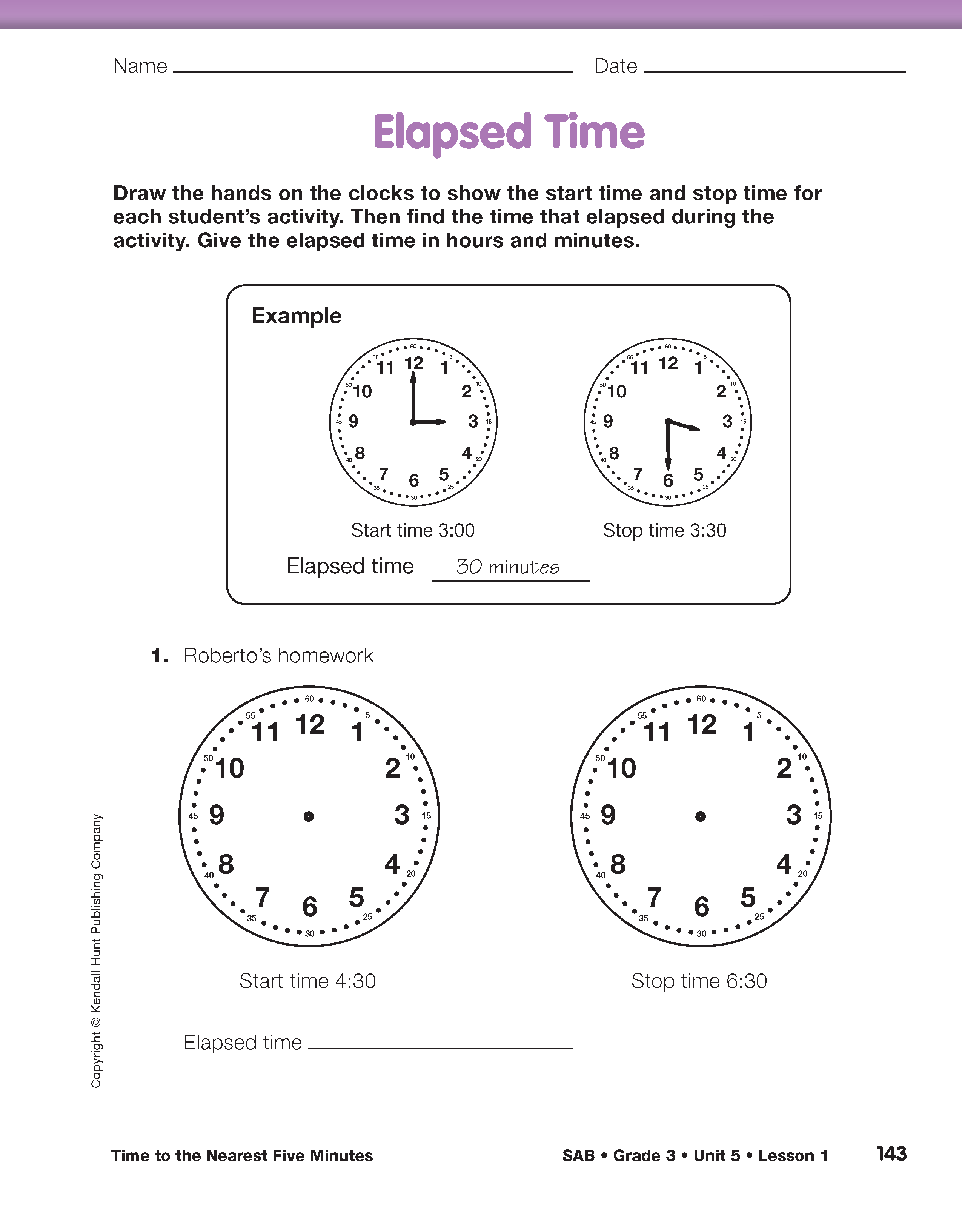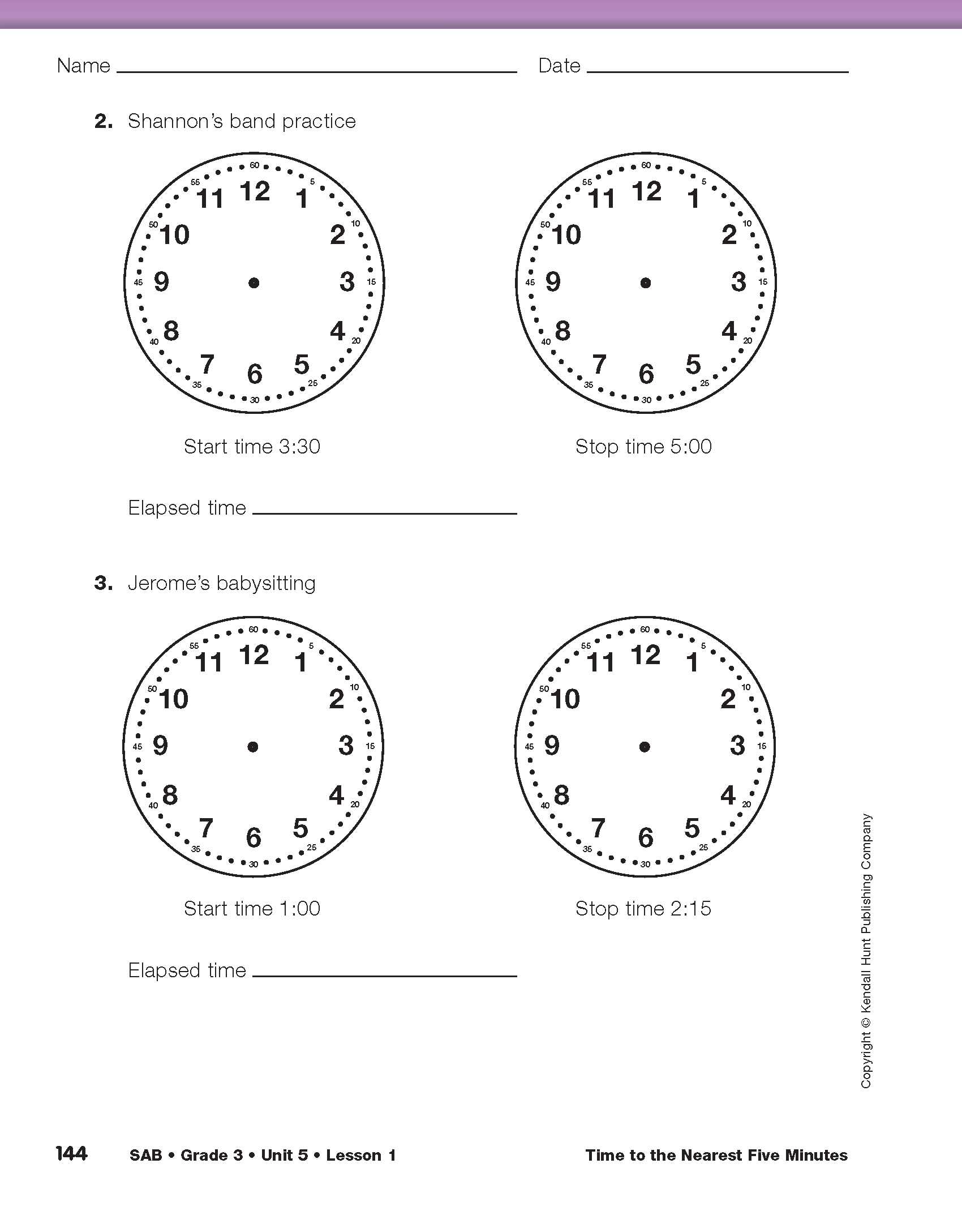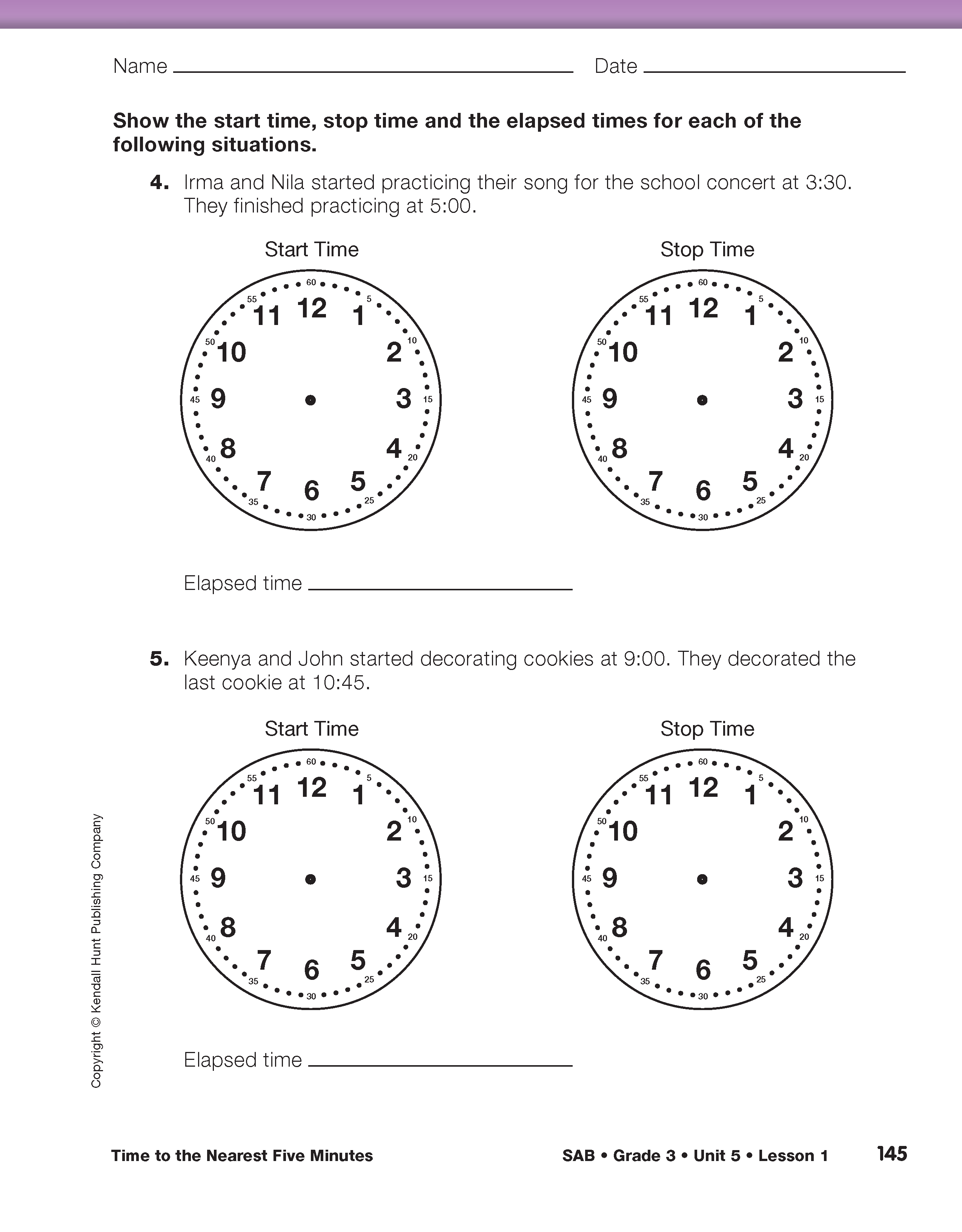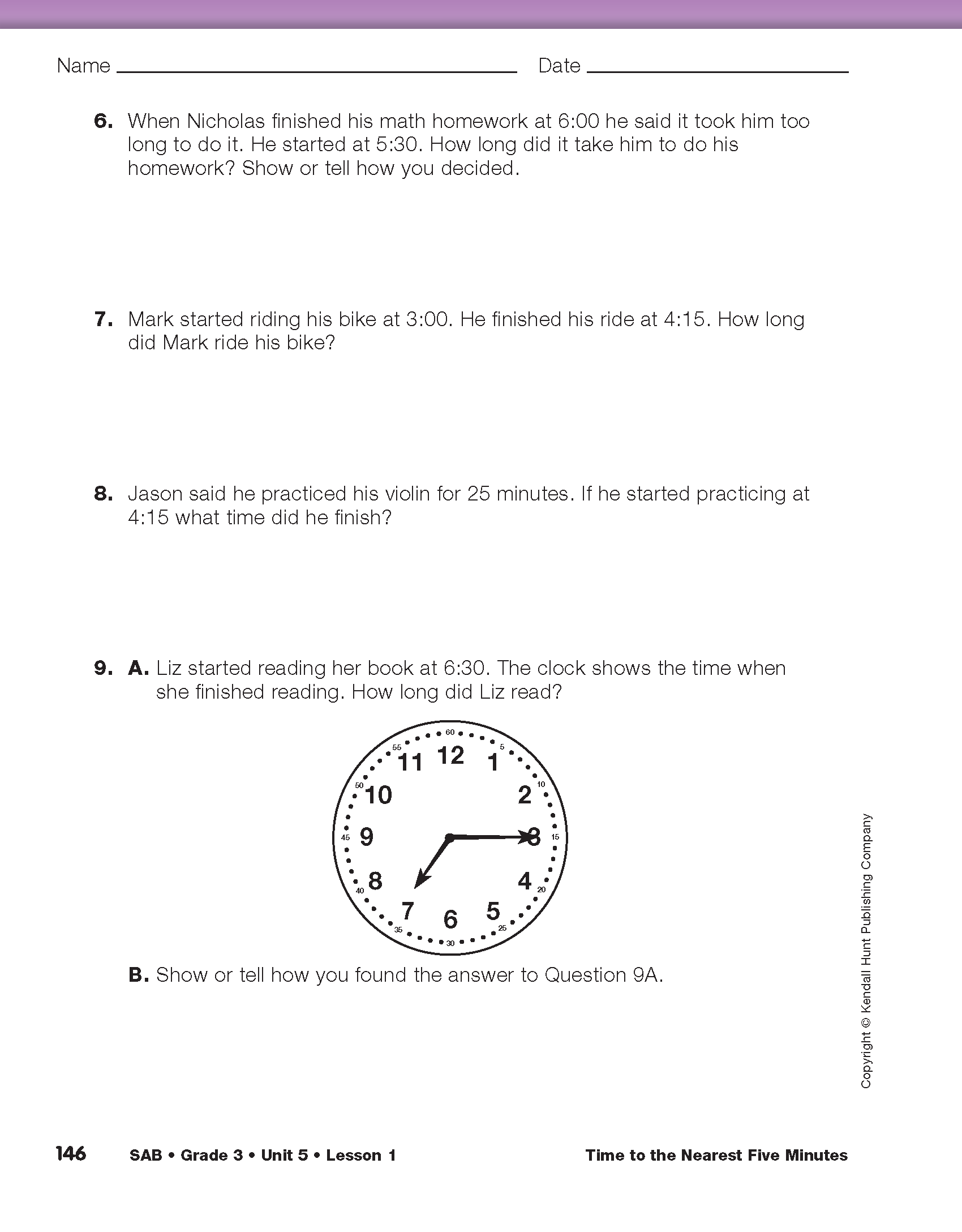To begin a discussion of elapsed time, ask students to set their individual clocks to show 11:00 as you use the large demonstration clock.
Use the following prompts to guide your discussion.
- Show me what time it will be when 30 minutes passes. (Students should show you their clocks set at 11:30.) What time will it be? (11:30)
- Move your minute hand to show what time it will be when another 30 minutes passes. What time is it now? (12:00)
- How many half hours passed from 11 o'clock to 12 o'clock? (2 half hours) How many minutes is that? (60 minutes) Explain how you know. (There are 30 minutes in a half hour so two half hours would be 60 minutes.)
- What is another way to say 60 minutes? (one hour)
Elapsed time is the measurement of the duration of an event from its beginning to its end. To measure time, the units of time (hours, minutes, or seconds) are started at the same time as the activity or event being measured and counted until the activity or event is finished.
(Van de Walle and Lovin, 2006)
Write the word “elapsed” on a display. Explain that elapsed is another word you can use to say how much time has passed. For example, since one hour passed from 11 o'clock to 12 o'clock we can say there has been one hour of elapsed time since 11 o'clock.
Have students continue to use their individual clocks to explore elapsed time. On a display, make a list of possible activities that students might participate in which start on the hour or half hour. Go through the activities writing the starting time and the ending time for each. Ask students to show the start time on their individual clocks and then move the minute hand to show the stop time. After showing the movement on their clocks have student volunteers describe the elapsed time for each activity. See Figure 3.
Use prompts similar to the following to help guide the discussion of elapsed time.
- Lunch begins at 12:00 and ends at 12:30. How many minutes have elapsed between the beginning and end of lunch? (30 minutes) How do you know? (The minute hand starts on the 12 and moves halfway around the clock to the 6. Halfway around the clock is 30 minutes.)
- What is another way to say 30 minutes? (30 minutes is the same as a half hour.)
- Math class begins at 1:30 and ends at 2:30. How many minutes have elapsed between the start and end of math class? (60 minutes)
- What is another name for 60 minutes? (one hour)
- If a piano lesson begins at 4:00 and ends at 5:15, how many minutes have passed from the beginning of the lesson to the end of the lesson? (75 minutes) How do you know? (The minute hand goes all the way around the clock once for 60 minutes and then 15 minutes more to get to 5:15. 60 + 15 = 75 minutes.)
- What is another way to say 75 minutes? (1 hour and 15 minutes)
Add Soccer Practice to the list of activities. Tell students that soccer practice begins at 3:30 and lasts for 120 minutes or 2 hours. Ask them to use their individual clocks to find the stop time. Students should see that the minute hand moves around the clock two times so that the ending time will be 5:30.
Have students complete the Elapsed Time pages in the Student Activity Book for additional practice.

















